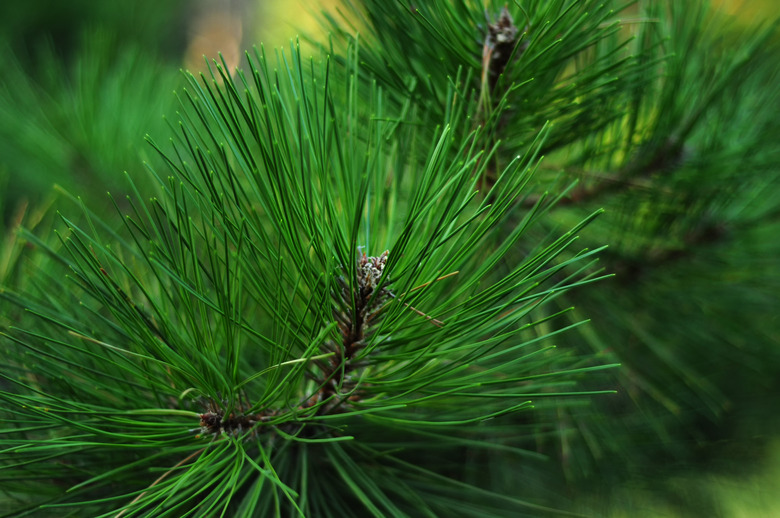How To Tell If Your Pine Tree Is Overwatered
We may receive a commission on purchases made from links.
Too much of anything is bad, even when it comes to watering your trees, which is why it's important to know if your pine tree (Pinus spp.) is overwatered. Roots need oxygen to survive, and overwatering your pine tree will drown it. Air pockets in the soil fill with moisture, and the roots are unable to "breathe," leading to death of the tree, if the problem isn't corrected quickly.
Unfortunately, symptoms of overwatering often resemble those of insufficient watering, which can lead well-intentioned gardeners to the application of yet more water. However, there are some telltale signs that will distinguish between drought and drowning.
How to Tell If Your Pine Tree Is Overwatered
1. Observe the Soil
Walk across the ground at your pine tree's roots. Watch the soil as you walk. Notice if water wells out of the soil or if your feet sink in. This procedure gives you a quick feel for conditions in which the tree roots may drown. While water may well up easily immediately following a deep watering, the ground itself should not feel spongy. Moreover, constant sponginess of the ground and excessive welling of water with pressure is a sign of continual overwatering.
2. Touch the Soil
Reach down and scoop up a handful of soil. Notice if the soil feels particularly wet, not just moist, and if it smells like sewer or rot. Close your fist around the dirt and release, to determine if the soil will hold a ball or crumble apart. Soil that feels muddy, or drips water, indicates overwatering. If the soil smells like sewage, it has been overwatered often, and your pine may be in imminent trouble.
3. Test Soil Resistance
Poke a broomstick handle or a similar rod straight down into the soil, to test the soil resistance. Your probe will penetrate moist soil easily, but when it encounters dry soil, it will stop or prove difficult to push. Your subsurface soil moisture should extend to about 18 to 20 inches in depth. If you do not encounter resistance at this depth, the soil around your pine tree roots is too moist, indicating overwatering.
4. Observe Pine Needles
Look at the needles on your pine tree. Needles that droop, wilt or appear discolored may indicate overwatering. Your pine tree may begin to lose branches as the needles turn brown, first toward the bottom of the tree, then working upward. Feel the needles to see if they feel brittle and abnormal. It's normal for a pine tree's old needles to turn brown and fall from the trees in autumn, but suspect a problem if it's losing needles at other times of the year or entire branches are turning brown.
5. Examine the Bark
Examine the pine tree's bark to find evidence of cankers, caused by different fungal pathogens. Cankers are areas of diseased tree tissue and may appear as discolored lesions on your pine's trunk or yellowish oozing through the tree bark. So if you notice any of these signs, it may already be too late to save your pine tree. Whenever a tree is stressed, it's more susceptible to disease.
6. Check for Algae and Mushrooms
Search for evidence of algae or mushrooms growing nearby. Fungi such as mushrooms require very damp conditions, which indicates that the soil is, and remains, too moist.
